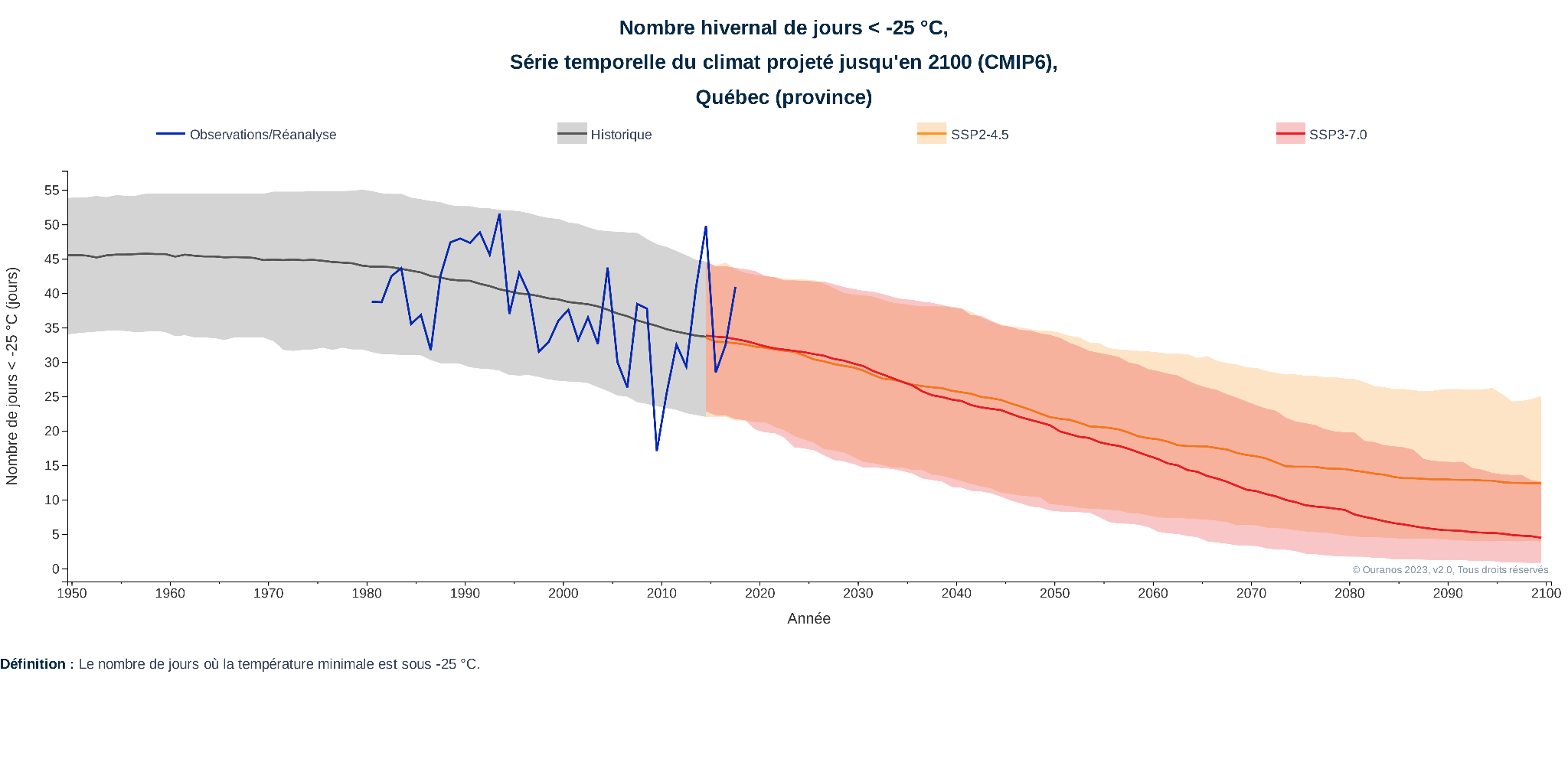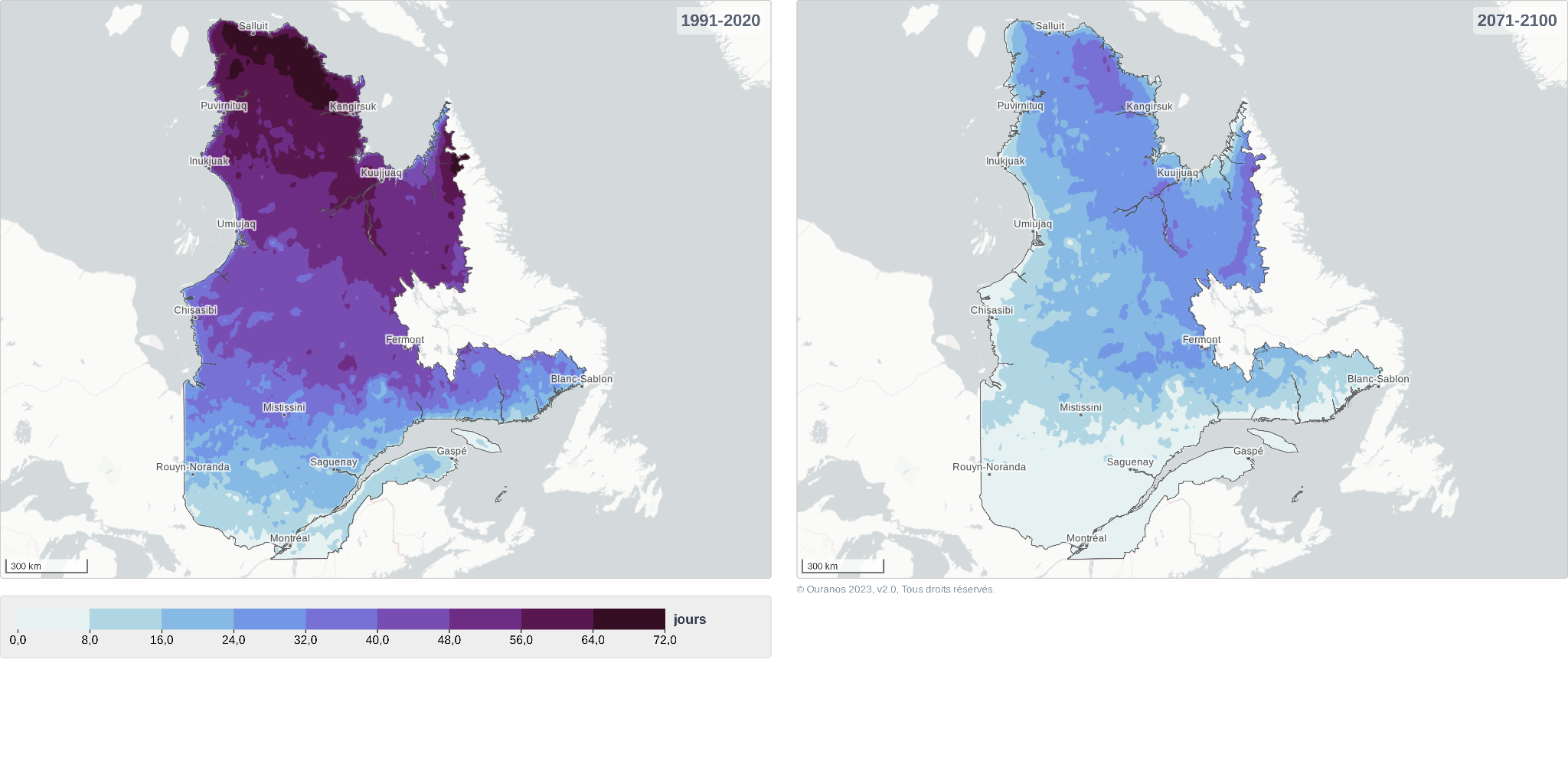Extreme cold
As a result of global warming, projections indicate that the frequency, duration and intensity of extreme cold spells will continue to decrease globally. In addition, the warming of temperature extremes will be more pronounced than the increase in average temperatures, in both summer and winter. In other words, cold periods will not be as cold and hot periods will be warmer.
This will be accompanied by a decrease in the annual number of frost days and the number of cool days and nights, as well as a slight decrease in the duration of cold waves.

Figure 1: Time series representing the number of winter days below -25°C in the province of Quebec, projected until 2100 using CMIP6 climate simulation ensembles, for moderate (SSP2-4.5) and high (SSP3-7.0) GHG emission scenarios. Based on a moderate scenario, the median number of days of extreme cold will be 22 days in 2050 and 12 days in 2100. The bands indicate the 25th and 75th percentiles. Source: Climate portraits, 2023.
Regional variability
The decrease in the number of days with a minimum temperature below -25°C will not occur at the same rate across the province, as northern regions are warming faster than areas further south.
Under a moderate emission scenario, northwest Nunavik will experience one of the most pronounced changes in Quebec, from 60 to 11 days of extreme cold in 2100.
Elsewhere in the province, climate projections suggest that the number of winter days with a minimum temperature below -25°C could increase from 37 days for the 1991-2020 period to 15 days by 2100, under a moderate greenhouse gas emission scenario.
By way of comparison, median trends indicate that Montréal and Laval, which currently experience about 5 days per year with temperatures below -25°C, are expected to experience only one per decade by the end of the century.

Figure 2: Map representing the projections of the number of winter days below -25°C in the province of Quebec under a moderate GHG emission scenario (SSP2-4.5), using CMIP6 climate simulation ensembles. The time horizons compared are 1991-2020 (left) and 2071-2100 (right). Source: Climate portraits, 2023.